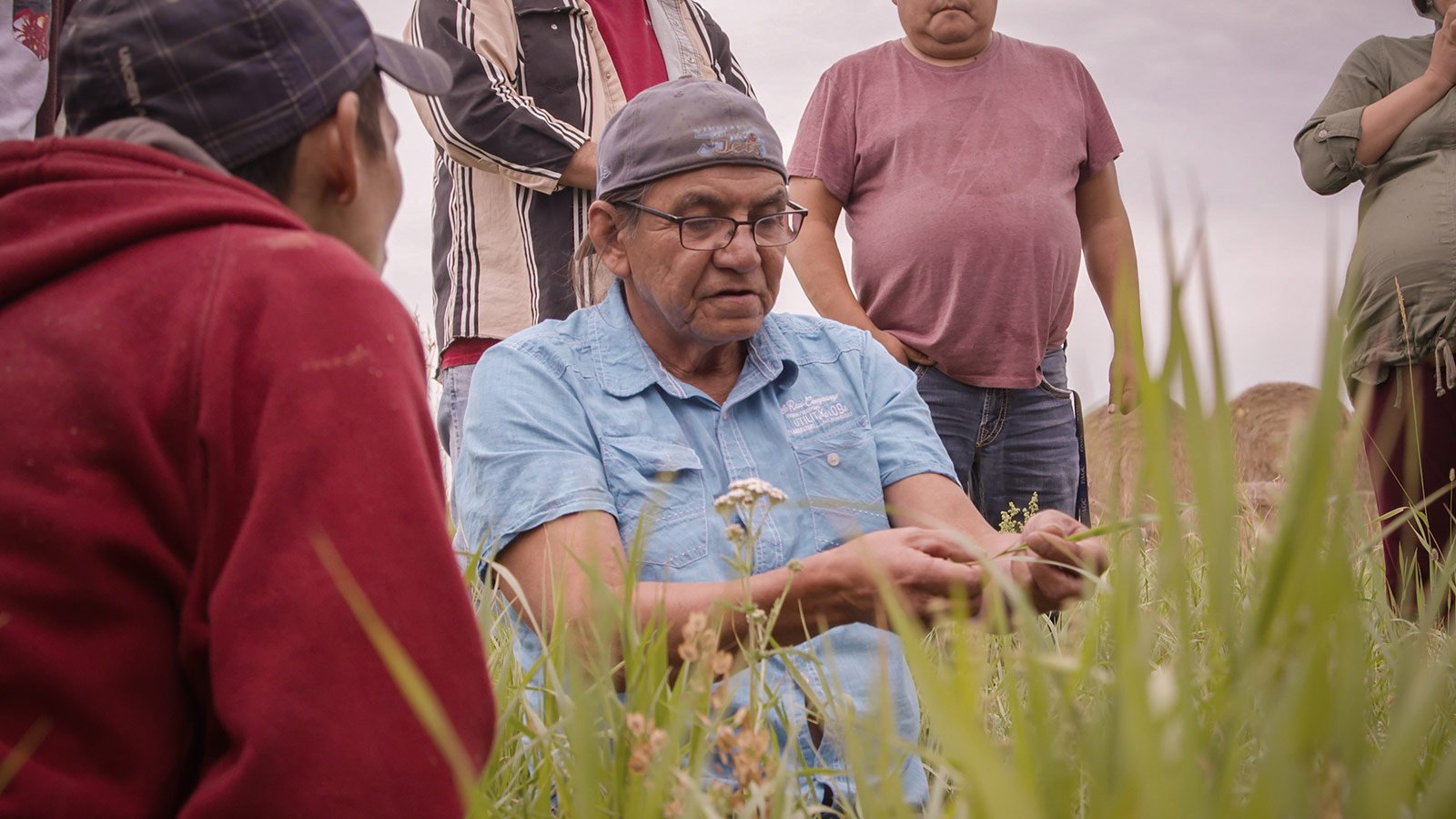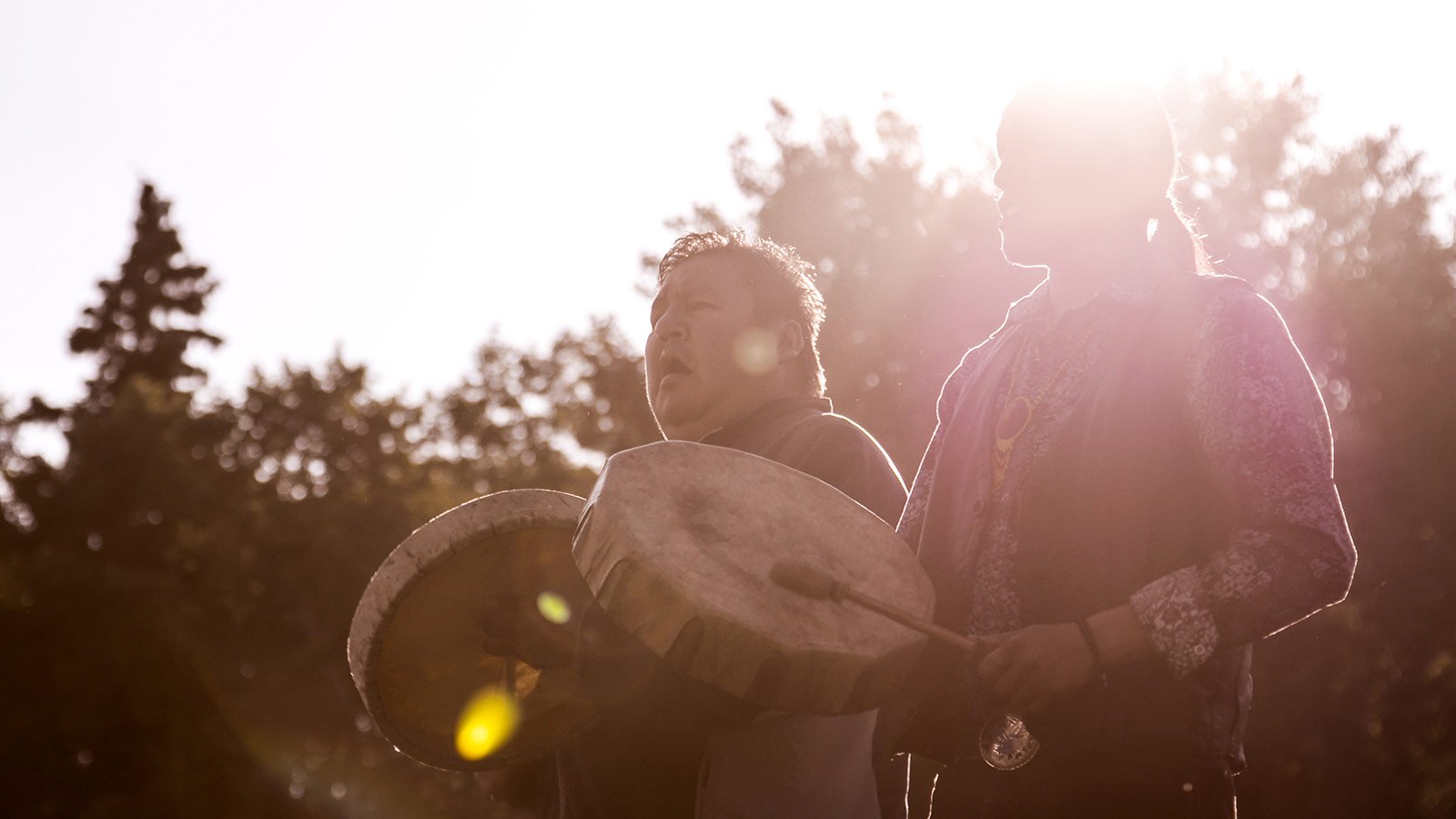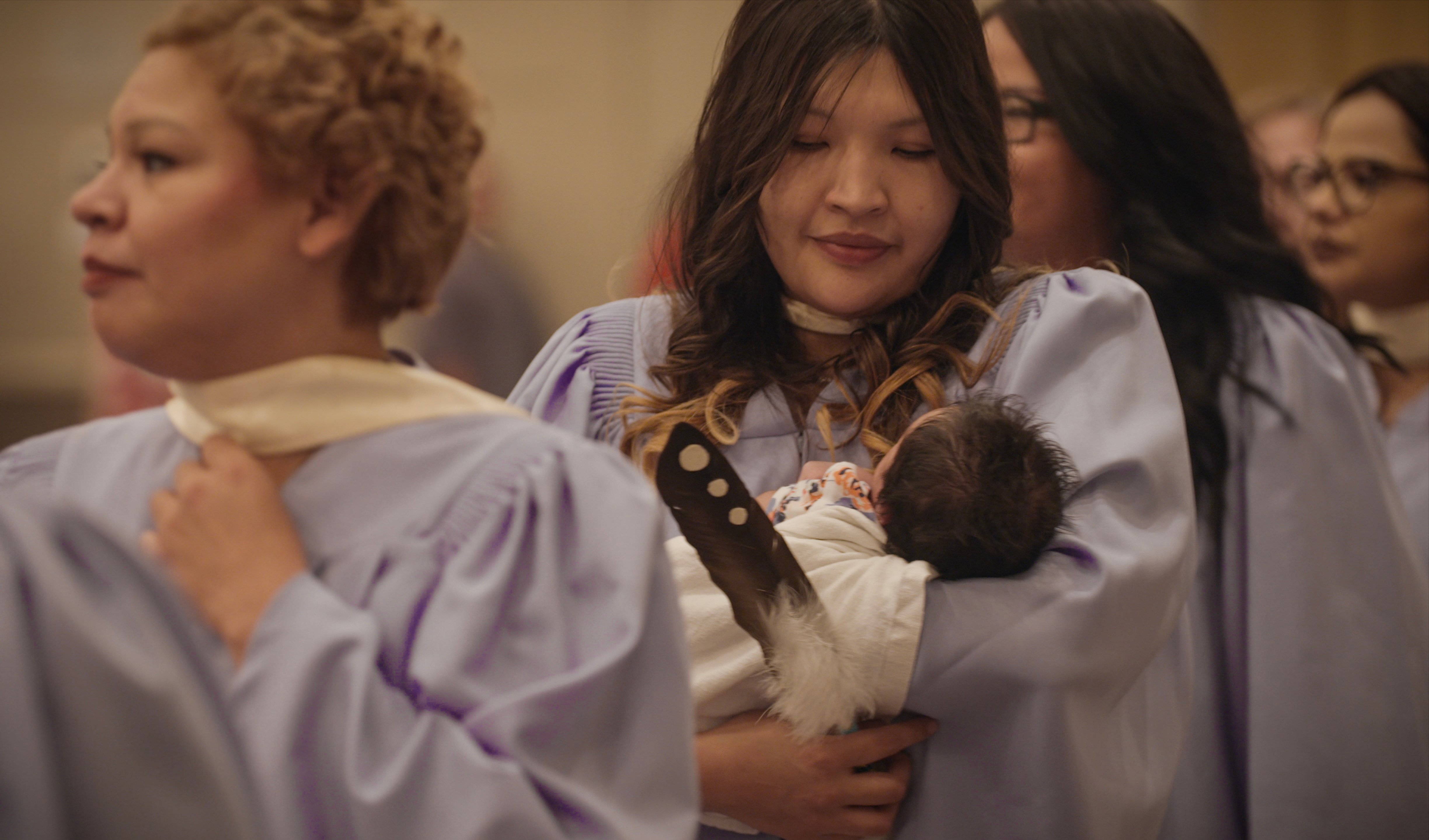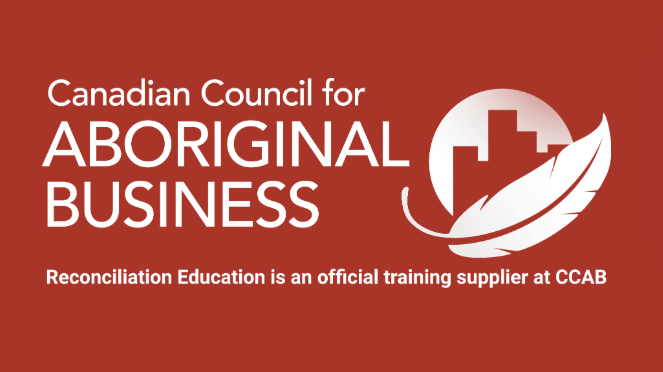What Are the Truth & Reconciliation Commission’s 94 Calls to Action & How Are We Working Toward Achieving Them Today?

Canada’s Indian Residential School (IRS) system will forever remain one of the country’s most shameful legacies. These church-run, government-funded institutions took Indigenous children against their will and subjected them to abuse, neglect, and dangerous living conditions in the name of assimilation into white European culture and religion—what colonizers considered so-called mainstream Canadian culture.
The IRS system was a cultural genocide spanning more than a century, yet one facet of a complex scheme by European colonizers to eliminate Indigenous Peoples, whom they deemed too different to function in their society.
As part of a growing Indigenous Rights movement, Indigenous communities have more recently demanded justice from Canada via protests, lawsuits, and intense lobbying.
One of those activist-led lawsuits resulted in the largest class-action settlement in Canadian history—mandating apologies from the Canadian government, official church bodies, and other participants in the horrors. It recommended policy changes, and allocated approximately $2 billion to distribute among Survivors of the IRS system.
The settlement also led to the 2008 creation of the Truth and Reconciliation Commission, a government-sanctioned body that spent several years:
- Hearing testimony from residential schools Survivors within the Indigenous, Métis, and Inuit communities
- Compiling a comprehensive and accurate report on the atrocities committed and the intergenerational effects of the system
- Recommending far-reaching policy changes and fostering comprehensive educational programs that would prevent such atrocities from ever happening again
When the Truth and Reconciliation Commission released its Final Report in 2015, it recommended 94 Calls to Action for the Canadian government to right such horrifying wrongs. This watershed moment in the Indigenous Rights movement marked the country’s preliminary attempts to begin dismantling the systemic racism devastating Indigenous Peoples in Canada.
This comprehensive guide contains a brief history of residential schools and the Truth and Reconciliation Commission’s 94 Calls to Action, and outlines how Canada is working toward reconciliation today.

A Brief History of Canada’s Indian Residential Schools (IRS)
Beginning in the late 17th century—very shortly after the French first settled in Canada—Christian missionaries founded boarding schools to indoctrinate Indigenous children with Western European sociopolitical culture.
In 1831, Mohawk Institute Residential School was established, and three years later, began admitting girls. While strictly church-run, it would become a critical archetype for the Canadian government’s stated goal of forced assimilation.
In this vein, in 1845 the government released the Bagot Commission Report, a study on how to exert colonial control and eradicate the Indigenous population. It proposed separating Indigenous children from their families to more successfully assimilate them, and pointed to the Mohawk Institute as a model for future schools.
The government-funded IRS system was officially enacted in the 1880s, not long after the implementation of the 1876 Indian Act, which had the explicit purpose of eradicating Indigenous culture. The law codified the right to educate and assimilate Indigenous children, and consequently, expanded the reach of the IRS system—transforming it into a colonial monstrosity.
The system continued to expand, with schools deliberately built far from Indigenous communities to minimize contact and increase children’s sense of alienation from their families and cultures.
The mistreatment was pervasive.
Children were severely punished for using their own language or acknowledging their heritage in any way, and this often involved physical, psychological, and even sexual abuse. Students frequently died or went missing, and due to poor record-keeping, effectively disappeared without a trace.
IRS attendance became mandatory for First Nations children in 1894—a policy inconsistently applied to Métis and Inuit children, as well. Indigenous communities regularly attempted to fight or hide their children, with whistleblowers sounding the alarm about the rampant abuses and high mortality rates at these schools as early as 1907—but the system persisted, and in fact, greatly expanded.
While the IRS system peaked in 1931—when 80 schools operated across the country—its atrocities continued until the late 20th century. The last didn’t close until 1996, the same year the Royal Commission on Aboriginal Peoples (RCAP) released a landmark, five-volume report, and only two years before issuing an official Statement of Reconciliation acknowledging the abuse and establishing the nonprofit Aboriginal Healing Foundation.
It’s estimated more than 150,000 children were forced to attend residential schools—and the shameful legacy of abuse didn’t end with their shuttering.
In the 1960s, as these schools were rapidly shutting down, the government kidnapped Indigenous children, many IRS students, and relocated them into non-Indigenous homes across the United States and Canada, a practice referred to as the so-called “Sixties Scoop.”

Why Was the Truth & Reconciliation Commission Formed?
In the 1980s, as a result of increasing Indigenous activism, Survivors of the IRS system began suing the Canadian government for the harm caused. It wasn’t until the mid-2000s, however, that there was a breakthrough.
In 1996, a group of 27 Survivors of the Alberni Residential School on Vancouver Island, British Columbia, filed suit against both the Canadian government and United Church of Canada. After nine years of deliberation, the court ruled in favor of the plaintiffs in 2005, finding churches “could not claim immunity from damage claims and therefore shared the blame with the government.”
Known as Blackwater v. Plint, this lawsuit opened the door to thousands of settlements, and ultimately led to the 2007 Indian Residential Schools Settlement Agreement (IRSSA)—the largest class-action resolution in Canadian history. Its five main components include:
- The Common Experience Payment
- Independent Assessment Process
- The Truth & Reconciliation Commission
- Commemoration
- Health & Healing Services
As part of this historic $2 billion agreement, the government formed the Truth and Reconciliation Commission in 2008 to investigate the full extent of the harm caused by residential schools, propose solutions, and prevent future abuse of Indigenous communities.
What Did the Truth & Reconciliation Commission Do?
According to the IRSSA’s Schedule N, the portion establishing the Truth and Reconciliation Commission, the council had seven goals:
- Acknowledge residential school experiences, impacts and consequences.
- Provide a holistic, culturally appropriate and safe setting for former students, their families and communities as they come forward to the Commission.
- Witness, support, promote, and facilitate Truth and Reconciliation events at both national and community levels.
- Promote awareness and public education of Canadians about the IRS system and its impacts.
- Identify sources and create as complete a historical record as possible of the IRS system and legacy.
- Produce and submit to the Parties of the Agreement a report including recommendations to the Government of Canada concerning the IRS system and experience, including: the history, purpose, operation and supervision of the IRS system, effect and consequences of IRS (including systemic harms, intergenerational consequences and impact on human dignity), and ongoing legacy.
- Support commemoration of former Indian Residential School students and their families in accordance with the Commemoration Policy Directive.
Throughout six years, the TRC held community events, heard thousands of hours of testimony from more than 6,000 Survivors, gathered relevant documentation, and created a historically accurate, heart-wrenching record of the IRS system and how it continues to harm Indigenous communities to this day.
The commission compiled a final report, titled “Honouring the Truth, Reconciling for the Future,” released in 2015.
What Did the Truth & Reconciliation Commission Include in Its Final Report?
The introduction to the TRC’s final report summarizes the legacy of the IRS system and Canada’s violent colonization in no uncertain terms, stating:
“For over a century, the central goals of Canada’s Aboriginal policy were to eliminate Aboriginal governments; ignore Aboriginal rights; terminate the Treaties; and, through a process of assimilation, cause Aboriginal peoples to cease to exist as distinct legal, social, cultural, religious, and racial entities in Canada. The establishment and operation of residential schools were a central element of this policy, which can best be described as 'cultural genocide.'
“Physical genocide is the mass killing of the members of a targeted group, and biological genocide is the destruction of the group’s reproductive capacity. Cultural genocide is the destruction of those structures and practices that allow the group to continue as a group. States that engage in cultural genocide set out to destroy the political and social institutions of the targeted group. Land is seized, and populations are forcibly transferred and their movement is restricted. Languages are banned. Spiritual leaders are persecuted, spiritual practices are forbidden, and objects of spiritual value are confiscated and destroyed. And, most significantly to the issue at hand, families are disrupted to prevent the transmission of cultural values and identity from one generation to the next.”
In its dealing with Indigenous Peoples, Canada did all these things.
There are numerous components to the final report, largely broken down into two categories: sharing the full, horrifying truth of the damage caused by the IRS system, and proposing, via Calls to Action, how best to move forward in a way that builds equity for Indigenous Canadians and begins the healing process.
Key Takeaways From the Report
- Survivors of the IRS system were subjected to malnutrition; physical, mental, emotional, spiritual, and sexual abuse; unsafe living conditions including exposure to extreme temperatures, mold and mildew, and overcrowded sleeping quarters; extremely high rates of infectious disease; and more.
- At least 3,200 children died while in the custody of the IRS system, though Justice Murray Sinclair, TRC Chair, estimates the death rate is as much as 10 times higher due to poor record-keeping.
- The IRS system caused intergenerational trauma for Indigenous Canadians, which manifests in the following ways:
- Indigenous Canadians have the highest unemployment rate.
- Indigenous youth are extremely overrepresented in the child welfare system.
- Despite making up just more than 5 percent of the total population, Indigenous Canadians account for more than 30 percent of the prison population in Canada.
- Indigenous Canadians have “significantly reduced” life expectancies and suffer disproportionately from “diabetes, hypertension, substance abuse, mental health concerns, and overall morbidity and mortality” as a direct result of social determinants and trauma, according to a 2019 analysis published in the journal Health Equity.
- A 2017 meta-analysis of 61 studies supports these assertions: The effects of the residential schools on Indigenous Canadians are intergenerational and multifaceted, negatively impacting mental and physical health.
- Access to safe housing and other essential services and items (such as clean drinking water) is severely limited.
- The mistreatment of Indigenous Peoples from the early days of colonization is directly responsible for the negative stereotypes and stigmas associated with Indigenous Canadians today.
- Moreover, the IRS system (along with other anti-Indigenous government policies) had a direct impact on current policies that make it more difficult for Indigenous Peoples to access funding, healthcare, education, and other resources that would build equity in their communities.
- Taken together, the reality of residential schools and their legacy is disturbing, and Indigenous Peoples are still suffering the consequences of colonization.
As such, the TRC authored a comprehensive document recommending changes to programs and policies that would effectuate meaningful change, titled “The 94 Calls to Action.”

What Are the 94 Calls to Action?
The 94 Calls to Action (CTAs) are actionable policy recommendations meant to aid the healing process in two ways: acknowledging the full, horrifying history of the residential schools system, and creating systems to prevent these abuses from ever happening again in the future.
Prevention, according to the CTAs, will happen by:
- Teaching all Canadians the reality of Indigenous Peoples' treatment
- Creating educational and economic opportunities for Indigenous Canadians so they can fully participate in society
The Truth and Reconciliation Commission’s CTAs can be broken down into two categories: Legacy (one to 42) and Reconciliation (43 to 94). Within each are numerous subcategories meant to tackle specific facets of the reconciliation process.
Legacy
The purpose of the Legacy CTAs is to address the history and atrocities of the residential schools, which separated Indigenous children from their families—largely First Nations, though also many Inuit and Métis—and subjected them to abuse, famine, disease, and other horrifying conditions while being forcefully assimilated into white European Canadian culture.
The collective goal of the first 42 CTAs is to fully and publicly acknowledge the cultural genocide committed. Each of the CTAs is broken down into subcategories of how this took place, and the modern-day effects on the following areas within Indigenous communities:
- Child Welfare
- Education
- Language & Culture
- Health
- Justice
Reconciliation
The goal of the remaining CTAs is to implement policy changes that will:
- Meaningfully and permanently dismantle the systemic racism that leads to worse health outcomes, premature death, and limited economic opportunities.
- Vastly improve life for Indigenous Peoples in Canada.
- Ensure, through thorough and honest education, that this never happens again.
Subcategories of these CTAs include:
- Canadian Government and United Nations Declaration on the Rights of Indigenous Peoples
- Royal Proclamation and Covenant of Reconciliation
- Settlement Agreement Parties and United Nations Declaration on the Rights of Indigenous Peoples
- Equity for Indigenous Peoples in the Legal System
- National Council for Reconciliation
- Professional Development and Training for Public Servants
- Church Apologies and Reconciliation
- Education for Reconciliation
- Youth Programs
- Museums and Archives
- Missing Children and Burial Information
- National Centre for Truth and Reconciliation
- Commemoration
- Media and Reconciliation
- Sports and Reconciliation
- Business and Reconciliation
- Newcomers to Canada

What Progress Has Been Made on the Truth & Reconciliation Commission’s 94 Calls to Action?
Progress has, unfortunately, been relatively slow. As of June 2021, only 12 have been completed, according to interactive website Beyond 94, a project launched in 2018 to, among many other purposes, track and monitor implementation of TRC’s 94 Calls to Action.
According to First Nations-led research centre Yellowhead Institute, completed CTAs include:
- #13: Federal acknowledgement of Indigenous Language Rights
- #41: Missing and Murdered Indigenous Women and Girls Inquiry
- #48: Adoption of U.N. Declaration on the Rights of Indigenous Peoples (DRIP) by churches and faith groups
- #49: Rejection of the Doctrine of Discovery by churches and faith groups
- #72: Federal support for the National Centre for Truth and Reconciliation
- #83: Reconciliation agenda for the Canada Council for the Arts
- #85: Reconciliation agenda for the Indigenous Peoples’ Television Network
- #88: Long-term support from all levels of government for the North American Indigenous Games
- #90: Federal support for Indigenous sports programs and athletes
There is, however, progress being made on many more. The Beyond 94 project reports the following updates:
- 20 Not Started
- 38 In Progress (Projects Proposed)
- 24 In Progress (Projects Underway)
- 12 Complete*
*Beyond 94 considers CTA #84—restoring and increasing funding to CBC/Radio-Canada to support Indigenous voices and reconciliation—complete. Yellowhead Institute does not.
Several examples of in-progress CTAs include:
CTA #1, which requires the government to reduce the number of Indigenous children in the child welfare system by providing resources to Indigenous communities and cultural competence training to social workers, is partially complete.
- In 2016, the federal government announced a five-year budget increase of $635 million in the First Nations Child and Family Service Program.
- In 2018, the government announced an additional $1.4 billion throughout six years.
- The government is reportedly collaborating with Indigenous leaders to reform the child welfare system as it pertains to Indigenous families.
CTA #17, requiring “all levels of government to enable residential school Survivors and their families to reclaim names changed by the residential school system by waiving administrative costs for a period of five years for the name-change process and the revision of official identity documents,” is partially complete.
- According to Yellowhead Institute, only some provinces “have made clear processes that expedite name reclamation”—not all levels of government, which the CTA demands.
CTAs #43 & #44—mandating the Canadian government to adopt the U.N. Declaration on the Rights of Indigenous Peoples and subsequently develop a national action plan to achieve its goals—are being worked on.
- Canada formally supported the declaration without qualification in 2016 (after initially voting “no” when it was first introduced in 2007).
- The government states on their CTA progress website that they’re working with Indigenous leaders to develop rights-based policies that will align with the United Nations DRIP.
CTAs #62, #63 & #64, concerning education for reconciliation (see “What Is 4 Seasons of Reconciliation Doing to Work Toward CTA Completion?” for more information), are in various stages of progress throughout the provinces and territories.
- While all provinces and territories do include IRS system history in their curricula, it’s not mandatory or extensive. Furthermore, according to Beyond 94: “only a few governments have senior-level positions in government dedicated to Aboriginal content in education.”
- In 2017, the federal government began contributing $3 million per year for a three-year period to First Nations University of Canada to develop a National Centre for Collaboration in Indigenous Education.
CTA #92 requires corporations to adopt the United Nations DRIP as a framework for all future operational activities, especially when involving Indigenous Peoples and their lands. It mandates that Indigenous Peoples have equitable access to corporate education, training and job opportunities, and that cultural competency and anti-racism training be considered a core component of professional development. Some progress has been made, though only in small ways.
- A 2017 survey of corporate Canada found that only one in four companies were even aware of CTA #92, so the Canadian Chamber of Commerce (CCC) called on the Canadian government to assist nonprofits in creating awareness and implementation. It also created a mentorship program for Indigenous Canadians interested in entering the corporate world.
- Indigenous Works, a nonprofit social enterprise formed as a result of the 1996 RCAP report, created the one-year “Accelerate” program to help corporations who wanted to implement #92 but didn’t know where to start.

How Does 4 Seasons of Reconciliation Help Schools, Companies & Organizations Achieve the Truth & Reconciliation Commission’s 94 Calls to Action?
Reconciliation Education’s ‘4 Seasons of Reconciliation’ is an anti-racism training course created to help meet the CTAs regarding Education for Reconciliation, and Business and Reconciliation. It also addresses CTAs related to Youth Programs, and Museums and Archives.
4 Seasons of Reconciliation advances the goals of the Truth & Reconciliation Commission and assists in achieving its 94 Calls to Action—whether within a corporate, classroom, or community setting. Certificates of completion are provided.
Here’s how.
K-12 Learning & Professional Development for Educators
Education for Reconciliation CTAs are #62, #63, and #64, and require the following from all levels of government:
- In collaboration with Indigenous Peoples, educators, and IRS system Survivors, develop age-appropriate curricula for K-12 learners on residential schools, treaties, and Indigenous Peoples' “historical and contemporary contributions to Canada.”
- Provide funding to post-secondary institutions to educate teachers on integrating Indigenous knowledge and teaching methods.
- Supply funding to Indigenous schools “to utilize Indigenous knowledge and teaching methods into classrooms.”
- Establish senior-level government positions dedicated to Indigenous content in education throughout the provinces and territories.
- Share best practices teaching these curricula.
- Continue to identify and optimize teacher training needs.
- Build cultural competency, empathy, and mutual respect among students using anti-racism pedagogical frameworks.
- Commit to funding religious students programs that must include Indigenous spiritual beliefs.
- Establish a national research program to advance understanding of reconciliation.
Here’s where 4 Seasons of Reconciliation comes in.
4 Seasons of Reconciliation is an online educational and professional development training module providing age-appropriate curricula for K-12 learners on Indigenous culture and history, particularly the history of residential schools and other ways in which colonization negatively impacts Indigenous communities.
Reconciliation Education also provides professional development for educators, so they can learn to integrate Indigenous knowledge into the classroom and bring an anti-racism pedagogical framework to their teaching.
How does this work? Our student training is:
- Customizable: You can choose content that meets province-specific requirements, honors relevant Land Acknowledgments, and is age-appropriate.
- Inclusive: Our content is available in both English and French.
- Interactive: Featuring videos, slideshows, interactive handouts, and quizzes, your students will stay engaged throughout the experience.
- Long-lasting: With resources for post-course, continuing education, your students can further advance their training.
Our teacher training is customizable, inclusive, interactive, and long-lasting. We take the seriousness of anti-racism to heart, and have also developed extra infrastructure to help your educators become stewards of all of the TRC’s CTAs, with the following components:
- Monthly webinar coaching
- Phone consulting to assist with rollout
- Discussion forum to connect with Indigenous experts and other educators
Our post-secondary and secondary classroom courses, and professional development courses for the education sectors, range from two to six hours, feature award-winning films, high-quality videos, slideshows, and bonus content for ongoing learning.
Corporate Cultural Competency & United Nations DRIP Framework
The Business and Reconciliation CTA is #92, and requires the following:
- All corporations must adopt the U.N. Declaration on the Rights of Indigenous Peoples as a framework for operational activities affecting Indigenous communities and their lands.
- Consult with and obtain prior consent from Indigenous communities “before proceeding with economic development projects.”
- Ensure Indigenous Peoples have equitable access to corporate education, training, and job opportunities.
- Train management and staff to be sufficiently educated on Indigenous history and culture, especially residential schools and treaties.
- Require cultural competency and anti-racism training to be a core component of professional development.
4 Seasons of Reconciliation’s work focuses on helping corporations with the training portion of #92, which assists in accomplishing the entire CTA.
We believe that training corporate Canada to be anti-racist and culturally competent, especially as these frameworks pertain to Indigenous Peoples, will help push organizations to adopt the United Nations DRIP and collaborate with Indigenous communities.
Diversity and inclusion (D&I) training is also an essential part of smart corporate growth. After decades of research, we can definitively conclude that inclusive workplaces are better for employees’ well-being, creativity, and your company’s bottom line. Inclusive workplaces retain employees longer and create more revenue and profit than companies that don’t focus on D&I, no matter the sector in which they operate.
4 Seasons of Reconciliation can help corporate clients develop D&I frameworks and train their management and staff with customizable, two- to three-hour training courses.

